Rejection; we’re all familiar with having our ideas turned down. Now, from August 23 through October 4 at the Banvard Gallery at The Ohio State University‘s Austin E. Knowlton School of Architecture, curators Team B Architecture & Design have reached out to architects and designers for Rejected, a show that will give rejected work its due. That includes interiors, streetscapes from Denise Scott Brown, cabins, and mediations on what failure and rejected schemes mean in the grand scheme of academia, when traditionally, winning proposals are the ones that are preserved for future generations to study. What’s lost when we let winners write the narrative? Rejected, in the same vein as Stanley Tigerman’s 1976 counter-show to 100 Years of Architecture in Chicago, seeks to widen the narrative about what has “worth” in the field.
The text that follows was written by the Architect’s Newspaper’s Executive Editor Matt Shaw for the show, and examines those who voluntarily wrap themselves in the mantle of rejection and what that entails. Rejected can be found at 275 West Woodruff Avenue, Columbus, Ohio, 43210. Graphic design for the show was done by Garrett Corcoran.
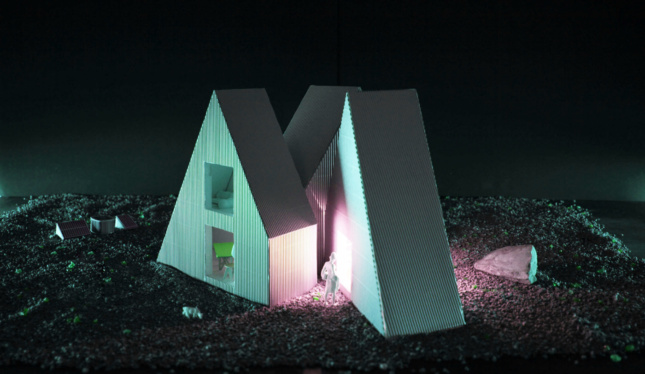
I like the topic of “rejection.” According to urbandictionary.com, a “reject” is “Someone who gets rejected from a group of friends or basiclly [sic] life. For example, someone might say, “Go away you fuckin [sic] reject, you have no friends, we all hate you.” This seems like a great starting point for a show.[i] [Redacted][ii]
Rejection seems like an important topic in today’s world. A quick search on 2knowmyself.com, generates a series of user-submitted questions, such as “Does rejection mean you are ugly”.[iii] A deep reflection on love and self-identity, this seemingly juvenile query seems to be at the heart of your show. What does it mean to be rejected, and to be a reject?
Within our hyper-capitalist neoliberal society, technology has played an increased role in how we see ourselves. According to South Korean philosopher Byung-Chul Han in his book Psychopolitics (Verso, 2018), smartphones and social media are commodified to the point where they have tapped into our psyches to exploit us. They accomplish this by creating a system where we exploit ourselves by constantly monitoring our own behavior, checking for likes and affirmation in the virtual sphere. It is like Foucault’s panopticon, except even more abstract and sinister, as each of us is our own guard. Rather than a biopolitics—the organization and exploitation of bodies in an industrial world—Han calls this neoliberal technological exploitation psychopolitics, or the exploitation of the psyche. “Instead of forbidding and depriving it works through pleasing and fulfilling. Instead of making people compliant, it seeks to make them dependent.”[iv] If neoliberalism wants us to seek affirmation, then seeking and celebrating rejection must be a healthy alternative.
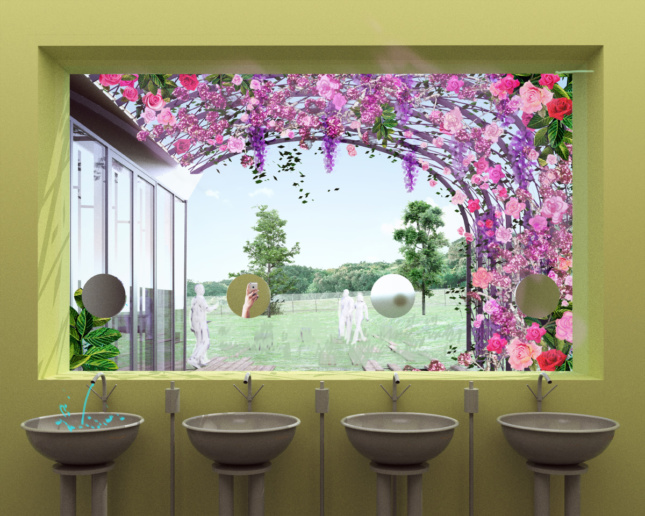
Team B is kind of like the incels of the architecture world. What is an incel? It is an involuntary celibate, a person who cannot have sex, despite wanting to. It is a state of constant and nihilistic rejection, which is referred to as “inceldom.” In dark corners of the internet, the incels have created an online subculture. At its worst, these incels become radicalized and turn to violence, including mass shootings. [Redacted][v] In the 2014 Isla Vista shootings, gunman Eliot Rodger left a manifesto, which has been regarded as an incel hagiography, and referenced by other mass shooters since. In My Twisted World The Story of Elliot Rodger by Rodger, he says:
Humanity… All of my suffering on this world has been at the hands of humanity, particularly women. It has made me realize just how brutal and twisted humanity is as a species. All I ever wanted was to fit in and live a happy life amongst humanity, but I was cast out and rejected, forced to endure an existence of loneliness and insignificance, all because the females of the human species were incapable of seeing the value in me…My life didn’t start out dark and twisted. I started out as a happy and blissful child, living my life to the fullest in a world I thought was good and pure.[vi]
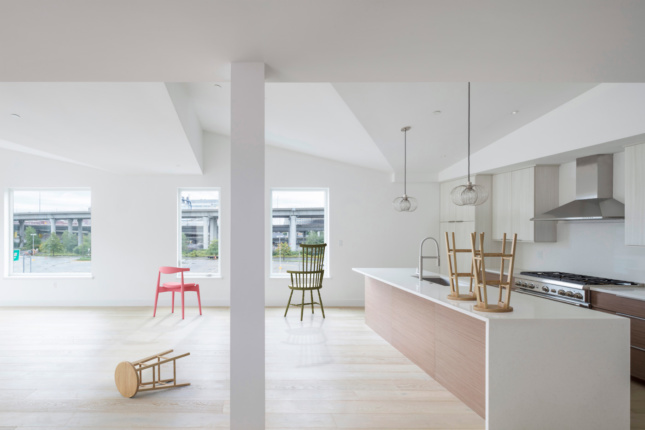
Rather than a violent band of murderous incels, Team B is more aligned with the original incels, a benevolent and supportive sexless bunch. [Redacted][vii] Ironically, for Rodger, the incel community also did not start out as a twisted, sick group of internet creeps who threaten violence against people who are sexually active, which they call “Chads and Stacys.” [Redacted][viii] The incel group was founded in 1993 by a Canadian student named Alana. “Alana’s Involuntary Celibacy Project” was a sincere community for “anybody of any gender who was lonely, had never had sex or who hadn’t had a relationship in a long time.” Alana eventually abandoned the project and handed it off to another user, but the group slowly devolved into the radicalized, misogynistic group we know today.
Rejection at its best becomes a rallying cry for a group or an ideology.
Denise Scott Brown, in the Rejected show, describes how the rejection of three Venturi Scott Brown & Associates’ projects was a systematic disavowal of the postmodern architecture style.
We feel that renovation of Franklin Court and the planned renovation of the San Diego Museum of Contemporary Art exemplify a rejection not only of design but of a whole style. The renovations of these two landmark designs demonstrates a dismissal of the fun and playful spirit of postmodernism in favor of the minimalistic look of contemporary design.[ix]
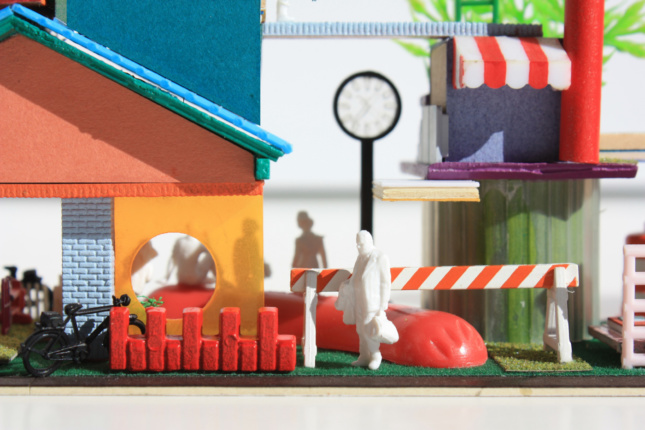
Philip Johnson also used rejection as a positive as he needled the Architectural League of New York, which eventually led to the International Style show at MoMA. According to Robert A.M. Stern,
In 1931 he co-curated (with [Alfred E.] Barr and Julian Levy) the independent show Rejected Architects, which created a public furor and paved the way for the International Style exhibit. It featured work by young architects that didn’t meet the requirements of the conservative Architectural League. The show was staged in a rented storefront and Johnson hired a sandwich-board man to parade in front of the League’s offices with the message “See Really Modern Architecture Rejected by the League.” The League was outraged and tried to have the man arrested, but the attendant front-page publicity insured the show’s success and brought modern architecture to the public’s attention for the first time in the United States.[x]
In the Rejected show, there is no stylistic agenda, because architecture today has no singular, dominant ideology. Rather, the exhibition is a performative rejection of the culture of neoliberal psychopolitical acceptance. While some more conventional commercially successful architects actively rejected the invitation to be in the Rejected show, many of the participants proudly flaunt being rejected by the arbiters of institutional taste and the decision-makers of the capitalist development community. Who has the power to accept being a reject? For many of the participants in the show, the academic backdrop allows rejection to be taken as a positive, a wink-and-nod, that it is ok to fail. Outside of the capitalist modes of production, it is a much-needed respite and represents a strong bond between practitioners, if not stylistically, then in a way of operating within a certain lane of the current context. Instead of an architectural act of violence, what we have here is a group therapy session for the happy-go-lucky rejects who take pride in their status as architectural incels.
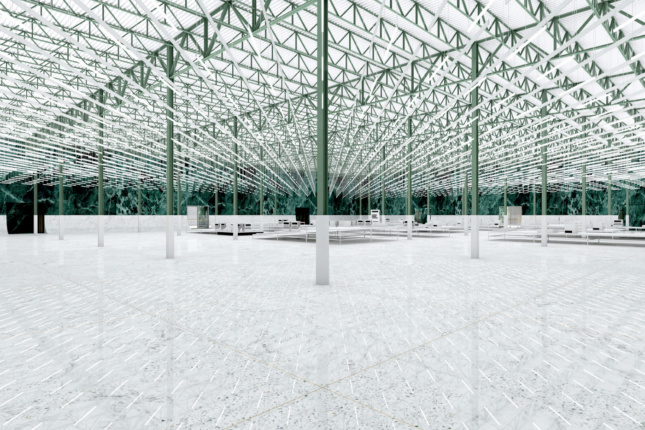
[i] Urban Dictionary. “Reject”. Urbandictonary.com. https://www.urbandictionary.com/define.php?term=reject (accessed August 5, 2019).
[ii] This sentence was rejected for being insulting to the curators.
[iii] 2knowmyself. “Does rejection mean you are ugly”. 2knowmyself.com. <https://www.2knowmyself.com/does_rejection_mean_you_are_ugly (accessed August 5, 2019).
[iv] Byung-Chul Han. Psychopolitics: Neoliberalism and New Technologies of Power. Brooklyn, NY : Verso, 2017
[v] This sentence was rejected for being too offensive in general.
[vi] Elliot Rodger. My Twisted World The Story of Elliot Rodger. <https://www.documentcloud.org/documents/1173808-elliot-rodger-manifesto.html> (accessed August 5, 2019).
[vii] This sentence was rejected for being too offensive in general.
[viii] ibid.
[ix] Denise Scott Brown, email message to John Stoughton. July 1, 2019.
[x] Robert A.M. Stern. “Philip Cortelyou Johnson (1906-2005).” The Architect’s Newspaper. </2005/02/philip-courtelyou-johnson> (accessed August 5, 2019).











